Resolut Blog
Backyard Landscaping Techniques to Block Neighbourhood Noise

Backyards are supposed to be a place to enjoy the outdoors. However, constant interruptions such as traffic, barking dogs, and loud neighbours can disrupt your relaxation.
Noise pollution is a common issue in residential areas, and its constant presence can transform your backyard retreat into a source of frustration.
Fortunately, there are many backyard noise reduction solutions that can help. Let’s explore the power of landscaping to block neighbourhood noise and provide a peaceful, backyard experience.
1. Install a Noise Reducing Fence
When it comes to reclaiming the tranquility of your backyard, a tall, sturdy fence is your best friend.
By creating a physical barrier, the fence works to absorb and reflect sound waves, effectively blocking out the noise that disrupts your outdoor enjoyment. The denser and more solid the noise-blocking fence, the better it will be at reflecting noise.
Not every fence is suitable for noise reduction, there are certain materials you need to use to block out sound. Masonry walls made of stone or stucco-covered concrete are considered the best materials for bouncing off sound waves. However, these materials may not be in every homeowner’s budget.
Solid wood fences are a great alternative to prevent noise and are more affordable to install than stone or concrete.
The design of a noise-blocking fence can also affect how well it can soundproof your backyard.
Solid fences with no gaps are your best bet, as they prevent sound waves from sneaking through cracks and openings.
Height matters too: the taller your fence, the more it acts as a sound barrier. Building it as tall as local regulations allow will reduce noise.
Be sure your fence extends all the way to the ground, eliminating any gaps underneath. This will help to significantly reduce noise infiltration.
If you can see where the noise is coming from, you’re more likely to hear it, so removing the source of the noise from your vision helps a tad bit more.
While noise-blocking fences serve a practical purpose, they often fall short in the looks department. But there's a simple solution that not only beautifies your backyard but also helps reduce noise: plants! Evergreen trees and shrubs, in particular, can dramatically enhance the appearance of a fence, softening its hard lines and adding a touch of natural beauty.
As a bonus, dense foliage acts as a natural sound barrier, absorbing sound waves and creating a more peaceful environment.
A well-built fence that is tall and has no gaps is the most effective way to drown out loud noises. Choosing materials that can boost noise reduction while adding specific plants can create a more peaceful, private space for your backyard activities.
2. Integrate Plants
While all plants offer some degree of sound absorption, evergreens stand out as particularly effective noise reducers. Unlike deciduous plants that lose their leaves in the fall, evergreens provide a consistent sound barrier throughout the year. Their dense foliage acts like a natural soundproofing blanket, absorbing and diffusing noise to create a more peaceful atmosphere.
Evergreens like Arborvitae, Leyland Cypress, and Boxwood are excellent choices for adding privacy and greenery to your backyard. When paired with a fence, the dense leaves and height of these evergreens create a powerful barrier that can help reduce noise.
Hollies, Junipers, Dogwood, Magnolia, Plum, and Cherry trees are also beautiful options that can also help reduce noise in your backyard.
To maximize noise reduction, design your planting bed in layers. Start with tall evergreens at the back, then add a mix of flowering trees and shrubs in the front rows. This layered approach creates a denser barrier, absorbing more sound.
For even better results, consider creating mounds of soil to place plants to add height, resulting in further sound absorption.
The closer the plants and shrubs are to the source of noise, the better they will reduce sound. Position plants and shrubs to block your view of the noise source, especially around areas where you want to relax. This strategic placement will help minimize the noise that reaches your ears and create a more peaceful backyard.
Strategically integrating plants not only helps reduce unwanted sounds but also enhances the aesthetics and privacy of your backyard. With careful selection and specific placement of plants, you can reap the benefits of a naturally beautiful, and quieter outdoor space during all four seasons.
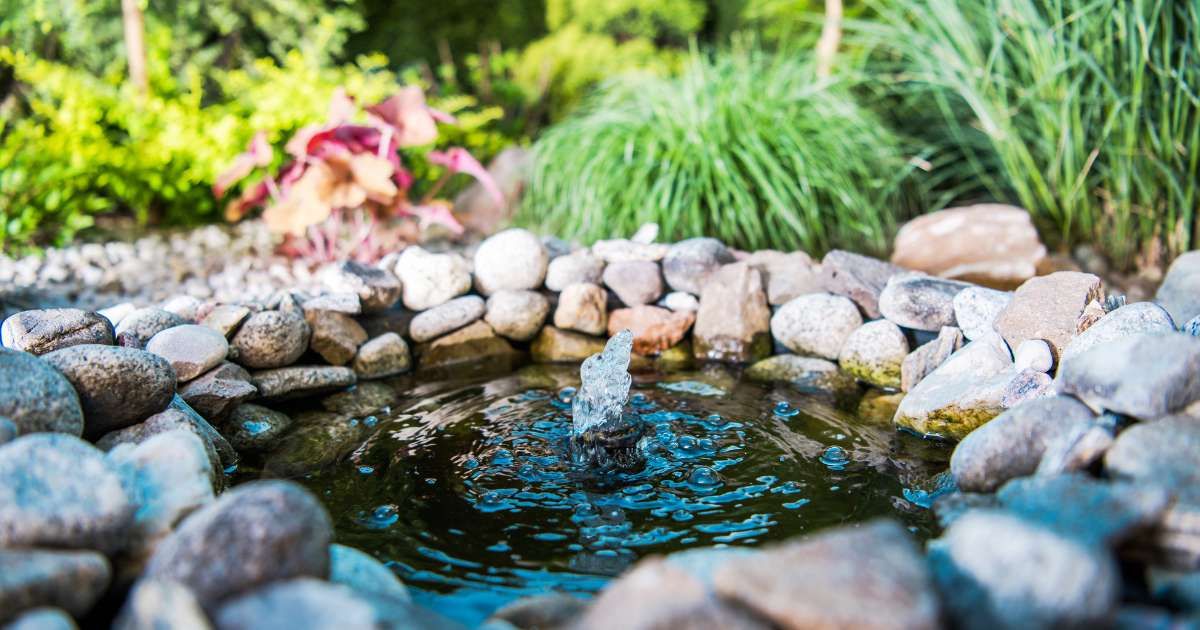
3. Install a Water Feature
Water features introduce calming background noises that can dilute unwanted sounds in your backyard. The sound of running water creates a white noise effect that helps drown out less desirable sounds like chatty neighbours, barking dogs, or loud music. The gentle, yet consistent noise can add to the aesthetic appeal of your backyard and transform it into a tranquil retreat.
There are many types of water features to consider, depending on the amount of room and budget. Basic fountains, such as birdbaths with recirculation pumps, are easy to install, adding a light touch of luxury and pleasant sounds of water.
For a more extravagant effect, consider installing streams, waterfalls, or ponds with recirculating water. These larger decorations can create a serene auditory experience, enhancing the overall atmosphere of your backyard.
Where you place your water features matters for effective of noise reduction. To maximize their noise-masking abilities, place them close to the areas where you spend the most time, such as seating areas or patios. The closer the water feature is to the listener, the more it can distract from unwanted sounds. Placing each installation near the house can also help mask noise from busy streets or loud neighbours.
By installing water features into your backyard, you not only add to the beauty of your backyard but also create a peaceful auditory mask that helps block out constant noise. This combination of visual and audio enhancements can remarkably improve the overall atmosphere of your outdoor living space, making it more peaceful and relaxing.
4. Create Visual Barriers
Psychoacoustics, or how our brains make sense of sound, plays an interesting role in how we perceive noise in our environment.
When the source of noise is hidden from view, our brains are less likely to register the noise as an interruption, making it easier to relax and enjoy your backyard. Visual barriers, such as trees and shrubs, can noticeably reduce the mental impact of unwanted sounds by creating an “out of sight, out of mind” approach.
Strategically planting trees and shrubs to block sight lines from screaming children, honking horns, or barking dogs can create a significant psychological barrier. Even if the actual noise level doesn’t change dramatically, the perception of a quieter environment can improve your overall comfort and satisfaction with your backyard quiet time.
As we discussed earlier, for year-round noise reduction and visual appeal, consider adding a mix of evergreen and seasonal plants. In addition to evergreens, incorporating seasonal plants can add beauty to your backyard.
Hydrangeas, lilacs, and spirea are popular options that provide vibrant colours and fragrances throughout spring and summer. These plants not only enhance the landscape of your backyard but also contribute to the subconscious reduction of noise by creating an elegant, and warm-coloured environment.
Remember to strategically plant these flowers in layered planting beds can boost their effectiveness. Start in the back with tall evergreens to build a solid visual barrier, and then add layers of shrubs and seasonal plants in front.
By taking advantage of psychoacoustics and using visual barriers, you can create a backyard retreat that feels more pleasant and secluded. Combining both evergreen and seasonal plants will provide year-round relaxation and attractive visuals, making your outdoor space a more enjoyable place to independently read a book or spend quality time with family.
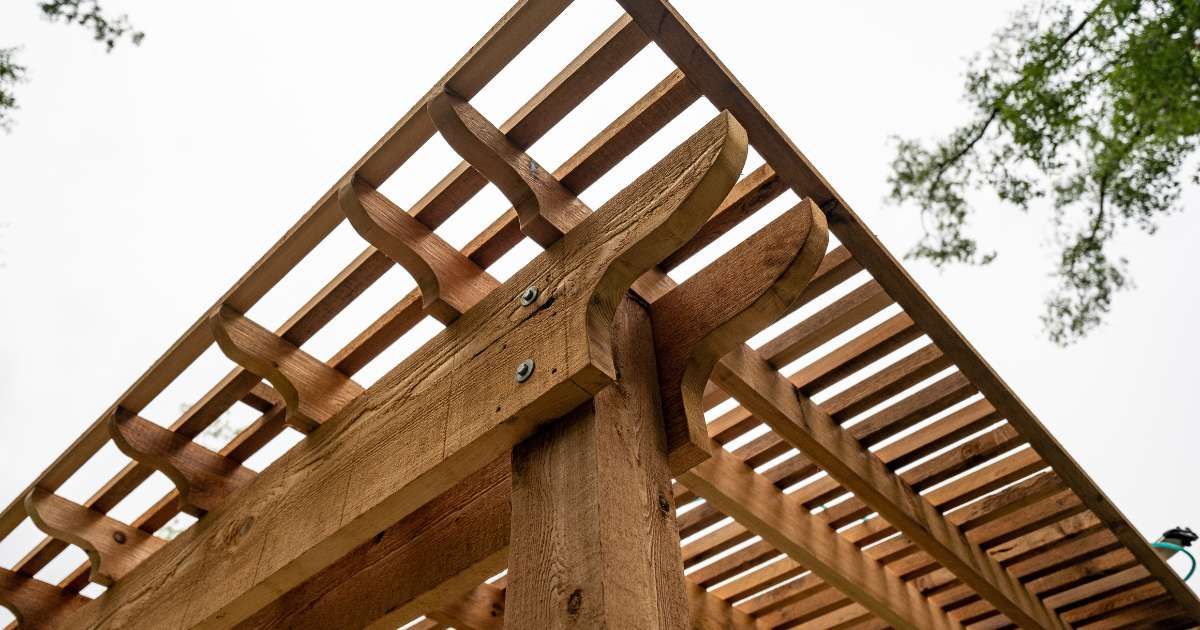
5. Additional Noise-Cancelling Techniques
In addition to fences, plants, and water features, there are other strong methods to reduce unpleasant noise in your backyard.
Outdoor speakers can be a great solution to distract from irritating sounds. By playing soothing music or nature sounds like birds chirping or beach waves, you can create an auditory experience that helps drown out unwanted disturbances. These speakers can be discreetly placed around your backyard, even designed to blend in with the landscape of your backyard, such as faux rocks or planters.
Sheds can serve as physical barriers, blocking sound waves and adding storage space.
Pergolas and trellises when combined with climbing plants create a natural sound barrier.
Sunken patios can lower the noise level by physically distancing your seating area from the sight of noise, utilizing the “out of sight, out of mind” technique.
Creating a peaceful backyard with no interruptions involves using fences, plants, water installations, outdoor speakers, and structures. By combining these methods, you can significantly reduce persistent noise and enhance the atmosphere of your outdoor living space.
Resolut Construction specializes in building fences and decks designed to make your backyard more enjoyable. Let us assist in constructing sturdy fences that successfully block noise, as well as visually appealing decks that enhance your backyard experience. Contact us today to start our journey to a quieter, more peaceful backyard paradise.
Pool Safety Fencing: Get Ready for Spring Swimming Season
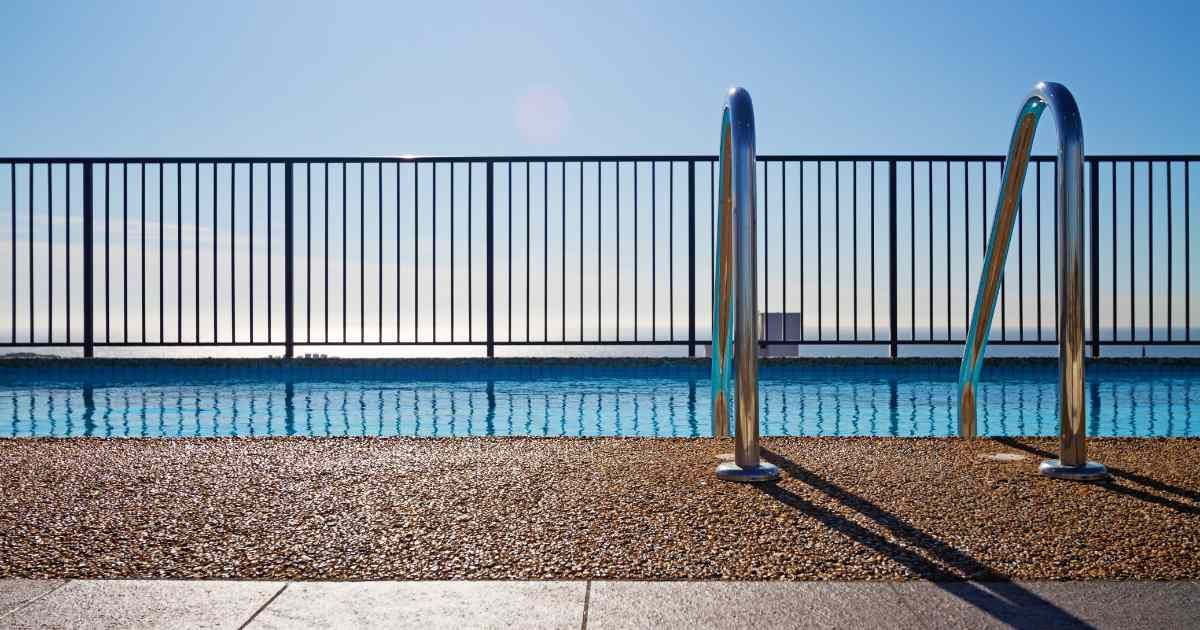
Spring and summer are the perfect times to swim, but like any activity, you must take precautions. You should have a pool safety fence, especially if you have pets or small kids.
While you may be tempted to forgo this measure to save money, there’s a lot more at stake if you do. Pool fences prevent pets, small children, and even animals from wandering into your pool by accident. This is essential for people with families or one, or even multiple pets.
Pool drownings, according to Health Infobase Canada, had the highest percentage of drowning deaths at 34.9%. Of these recorded cases, 65.5% involved children under the age of 15.
A good pool fence design offers an essential barrier that safeguards anyone using the pool and those who could wander in it accidentally. By incorporating a pool fence that fits the aesthetic of your outdoor space, you're taking a proactive step in creating a secure environment for everyone who enjoys your pool.
Not to mention a pool fence comes with several other benefits that most people don’t consider. Today, the experts of Resolut Fence and Deck will break down some of the best perks of having a pool safety fence for your springtime oasis.
The Benefits of a Pool Safety Fence
Several key benefits come with having a pool safety fence, from enhanced security to improving the overall look of your space. Let’s break down some of the main benefits:

1. Ensuring the Safety of Pets and Children
Perhaps the most important benefit of pool safety fencing for your outdoor space is its increased protection for children and your pets.
Fences provide you with a physical barrier that stops accidental slips and unsupervised access to your pool. This is essential for people with young kids and pets prone to curiosity because it helps eliminate the potential for accidents.
It also helps create an environment where you can teach your kids more about pool safety and how to interact with the pool in an informed way.
2. Create Privacy and Define Your Boundaries!
Perhaps the second most important benefit of a pool safety fence is the increase in privacy. Everyone loves the idea of having an oasis away from prying eyes, whether that be neighbours or passersby. This sense of privacy is vital when it comes to creating a private pool and swimming experience. Eliminating the potential for external interruptions or disturbances can help in this effort. Also, having a firm boundary defining the pool area can help prevent other yard activities from impacting the space. No wayward soccer balls or unwanted grass clippings in your pool.
3. Improving Appeal and Increasing Property Value
Modern-day pool safety fences can be implemented with the overall design and aesthetic of your outdoor space in mind. A good-looking fence can provide a nice touch to your property, even coming with the benefit of increasing its market value. Whether you prefer a classic iron fence or something sleeker like glass—you can match whatever suits your style.
Understanding Pool Enclosure Permits
It's important to consider several things when it comes to adding a pool safety fence, including the permits you'll be required to have before moving forward with your project. In this scenario, we'll be looking at regulations in Ontario you'll need to consider:
Before you go ahead and enclose your pool, you'll likely need a permit. While many municipalities don't require a Building Permit for a pool, you do generally require a Building Permit to build a fence around your pool. The Ontario Government has implemented legislation regarding pool safety requirements, including the necessity of a fence, a locked gate, and more. For more information, see Ontario's Bill 74.
While you do not need a Building Permit to install a swimming pool in most municipalities, you do need a Building Permit for:
Constructing a pool enclosure (fence)
Constructing a deck connected to the pool
It’s also important to remember that the permit process varies by the municipality.
For example:
In Toronto, acquiring a permit starts with obtaining a Zoning Certificate. Simply fill out the Zoning Form and send it to [email protected] via email.
On the other hand, in Hamilton, you can conveniently submit an ePlan application online.
Should You Let Your Neighbours Know?
The answer to this question is short and sweet. No, you don’t need to tell your neighbour that you are building a backyard pool.
The government of Ontario doesn't require you to let your neighbours know if you're building a pool, but there are some situations where you should. Such as if you plan on building a pool safety fence. For more information, see the Government of Ontario.
When it comes to making the decision to build a pool safety fence for your pool this spring, you should consider trusting the experts at Resolut Deck and Fence.
Understanding the Basics of Pool Safety Measures
Installing a pool safety fence is only one step in the equation when it comes to keeping everyone using your pool safe. To ensure you're making the most of your pool safety fence, we will cover some additional safety protocols for your pool.
Avoid swimming alone
There will naturally be times when you want to take a solo dip, but swimming alone comes with serious risks. If you get a cramp or suffer a sudden health event, there won't be anyone there to help you in an emergency. Make sure that if you plan to take a dip on your own, you let someone know, along with the average amount of time you spend in the water. Also, this goes without saying, but: NEVER, EVER, allow children to be around a pool unsupervised, even if you're confident in their swimming ability. Even strong swimmers can run into issues in the water. If you have kids playing in and around the pool, there must be an adult present.
Be prepared to intervene in case of an emergency
You must be prepared to act in case of an emergency, which means you must have access to the right equipment - including a safety hook or even a floatation device. These items need to be accessible and easy to grab at a moment's notice.
You should also have a means of contacting 911 if necessary, meaning you should always have a cellphone available to make emergency calls. Keep it far enough from the water that it isn't at risk of damage, but close enough that you can access it in an emergency. If an emergency does strike, saving those essential seconds to make a 911 call could be the difference between life and death. Also, if you have a pool, it's highly recommended to be certified in CPR and first aid. If you are certified, make sure your certifications are up-to-date and you're confident enough to perform life-saving measures.
Limit any outside access to your pool, whether it from children or adults
Ensure that your pool isn't accessible, intentionally or accidentally by other adults or children. Even your pets can be at risk if your pool doesn't have a proper barrier. This is why it's extremely advisable to have a pool safety fence in place to maximize the security of your pool while minimizing the risk of an accident.
Why choose Resolut Fence and Deck
The team at Resolut Fence and Deck specializes in building premium residential and commercial decks and fences that take your outdoor living spaces to the next level, creating an environment that's enjoyable to spend time in. We specialize in everything from outdoor kitchens, poolside decks and fences, multi-tier decks, and more. See out contact page for more information.
Transform Your Patio with Genius Privacy Fencing Solutions
With the warm weather on the horizon, you're going to want to spruce up your patio and spend more time in the fresh spring air.
However, if you want to get into your tanning clothes or plan to spend some time outside with your family, you may want to consider privacy fencing.

Privacy fencing provides you with privacy and security by blocking your view from those on the outside. This requires the installation of barriers around a property to provide seclusion and limit visibility from the outside.
These fences are typically constructed using solid materials such as wood, vinyl, or metal panels. They stand at a height that obstructs the view into the enclosed area, offering greater privacy to the property's owners.
Privacy fencing is commonly used in residential settings to create boundaries and enhance security by preventing unauthorized access and shielding your activities from public view.
Today, the fencing experts at Resolut Fence and Deck will provide you with some insight into the key benefits of privacy fencing, especially when you plan to enjoy your springtime patio!
When you get the itch to revamp your patio, you can often put forward a good chunk of money to get the dream patio that you want. As such, you’re going to want to make sure you keep your property safe and secure, especially if you have young children or pets who will frequent the yard.
In the ever-evolving world of gardening and decor, Canada has showcased a steady rhythm in its garden supplies sales cycle. May 2022 emerged as the peak month, witnessing a retail sales value exceeding one and a half billion Canadian dollars.
Surprisingly, even amidst the challenges of the coronavirus pandemic in 2020 and 2021, the retail sales for lawn and garden equipment in Canada remained resilient, unaffected by the turmoil.
What that means is there is an upward trend of increasing outdoor decoration and activities with little chance of it slowing down. That means you’re going to need a good quality privacy fence to keep your springtime activities safe and contained.
The 10 Key Benefits of Privacy Fencing for your Springtime Patio
The demand for outdoor living has been on the rise in recent years, with several homebuyers making improvements to their outdoor spaces each year. As such, having a privacy fence built simply makes sense.
Other than improved security and overall privacy, there are several key benefits to having a privacy fence for springtime patio season!
If you want to totally upgrade your outdoor space, then a great first step is building a privacy fence.
A privacy fence is an upgrade that can truly transform your outdoor area into a Zen, private space that promotes relaxation and security. It provides the perfect secluded touch that will allow you to lounge on the patio without the concern for nosy neighbours.
If you're not sure whether or not installing a privacy fence is worth it for you, keep on reading or consider checking out our website for more information. We can help you make your next big backyard decision!
1. Greater Privacy
One of the most obvious benefits (we may have mentioned it once or twice) is the increase in privacy! It's hard to disagree that having additional privacy is something that can make your home and outdoor space feel more rejuvenating without feeling like someone is peering through their windows at you.
Having your yard open to the outside can put a damper on your privacy and could make it feel more like a public space than a place to call your own. A privacy fence is one of the best ways to solve this conundrum. Once it's up, you and your family can feel free to relax!
By enclosing your outdoor space with a sturdy privacy fence can offer you a greater sense of peace and respite from the outside world. Who doesn't need that?
2. Protection from the Elements
Besides keeping nosy neighbours at bay, a privacy fence can also offer some protection against the elements. In colder months, it also provides you with a patio that's a little warmer by blocking out the poor weather.
If you're having guests over with the intention of having a barbeque or outdoor get-together, the last thing you want is your guests being chased inside because the wind is ruining the fun. A privacy fence can protect your patio (and your guests) from an unruly breeze.
If you live in a windier climate, protecting your yard from the wind with a privacy fence can be the make-or-break factor around how frequently you use your patio space. Nobody wants to be battered by heavy winds and have their stylish hairdos ruined every time they want to enjoy their outdoor space.
Giving your outside area some necessary shelter from the wind by installing a privacy fence is the perfect way to protect your yard while also creating a serene, protected patio that you can use to its fullest potential.
Besides protecting you from the wind, a privacy fence also offers some much-needed shelter for your plants. Typically, plants don't fare well in excessively windy climates, especially plants with larger leaves and sensitive ornamental plants.
Learn more about maintaining your fence based on style and material in our blog.
3. Increased Security for Children and Pets
Another great reason to install a privacy fence is the safety it provides for your pets and your children. Privacy fences have limited or no gaps in general, making it ideal for ensuring your child or dog can go outside without the concern of them getting out.
This added level of security and safety can also enable you and your family to use your outdoor area without worry.
4. Sound Barrier
If you live in a busy neighbourhood or happen to have noisy neighbours, a privacy fence can help to reduce and muffle unwanted sounds.
A privacy fence can't necessarily block out the entirety of the sounds, it can take the edge off and help reduce the noise. If creating an additional layer as a sound barrier, then you can opt for a wood fence, vinyl fence, or concrete stone fence. These fences have the best sound-deflection materials.
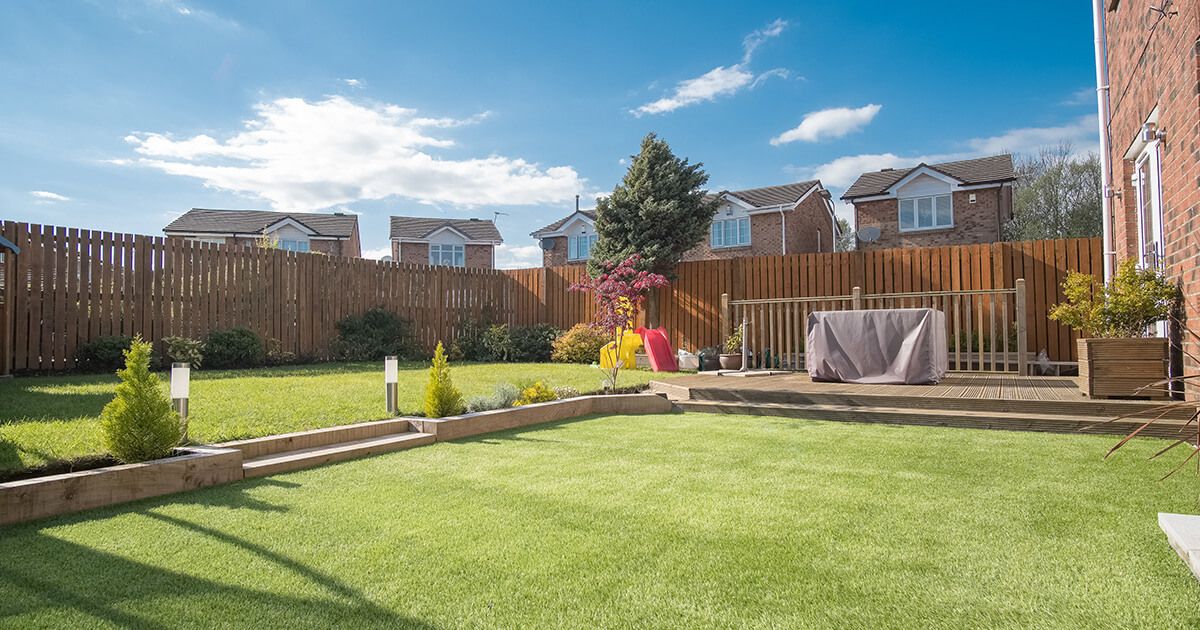
5. Say Goodbye to Unwanted Views
Beyond shielding your yard from prying eyes, a privacy fence serves as a versatile solution to block out unsightly sights from within your own space.
Imagine neighbour's growing collection of old appliances cluttering your backyard view, or their sprawling washing line showcasing his family's laundry just as you entertain guests. By erecting a privacy fence, you can effortlessly eliminate these eyesores, transforming your outdoor oasis into a serene sanctuary while simultaneously enhancing your property's aesthetic appeal.
6. Additional Dimensions to your Patio Space
One of the most overlooked potential benefits of a privacy fence is the dimension and visual appeal it provides your patio, especially in the glow of the springtime sun. A privacy fence is an attractive addition to other attractive features like modern patio furniture and water features like bird baths, fountains, or pools.
Homeowners want to enrich their patio with features that really complement the outdoor living space. Installing a privacy fence can make your patio feel quainter than a plain backyard.
Safeguarding Your Property
When it comes keeping your home safe and secure, a privacy fence is a great addition. While it isn’t explicitly designed for security purposes, these tall, view-blocking fences are a formidable theft deterrent by minimizing the visibility into your property.
Consider this: your outdoor treasures, such as stylish patio decor to high-end equipment, are on display for all to see. Without a proper shield of privacy, opportunistic people may be tempted to help themselves when you least expect it.
But here’s where a privacy fence can provide some security benefits: by concealing your valuables from envious eyes, it reduces the chances of attracting unwanted attention from people passing by.
The benefits don’t end there. A sturdy fence not only limits access to your yard, but it also hampers the efforts of possible intruders. Whether it's the sheer height or the sturdy build, breaching a six-foot privacy fence is not an easy task compared to a simple chain-link fence.
An additional bonus: you might not even require a permit for a privacy fence, although you’ll want to double-check this. Unlike other fence types, privacy fences sometimes don’t require permits. However, you should still investigate this with your local authorities before you start building to ensure compliance with city regulations.
A privacy fence isn’t just about secluding your sweet springtime patio set up – it's also about the safety and security and your family and property.
If you’re interested in having a privacy fence installed, see Resolut Fence and Deck’s website for more information.
Transform Your Space with a Brand-New Fence Installation
Imagine it’s a beautiful spring day. The weather is finally warm enough that you and your family can spend some time on the back deck.
Your sprinklers are running, the sun is shining, and...your neighbours can see directly into your backyard.
You need a fence.

Not just any fence, but some real custom workmanship. And Resolut Fence and Deck can help.
Spring is one of the better times to install a fence if you’re looking to enjoy some well-deserved privacy and security by the time grill season is upon us. By the time summer comes around, you’ll be able to relax and enjoy all the benefits of your brand-new fence. However, this season can be demanding, so planning ahead is essential.
At Resolut Construction, we specialize in all things fencing. Recognized in the Waterloo Region and beyond for quality and timeless workmanship, we have been building premium residential and commercial deck and fence projects for the past 30 years. If you’re planning to install a new fence in the near future or would like your existing one looked at, don’t hesitate to reach out. We will gladly come to assist with your project!
Which Season is the Best for Installing Fencing?
The best times to install a fence is generally during the spring or the fall, when the weather isn't too hot or cold and there is less rain than the summer months. However, realistically, any time of year is a good time to install a fence as long as you prepare for the weather.
Springtime is a great time to get a new fence project started because the soil is soft, and you won't be battling severe heat. When the flowers are blooming, so is the demand for fences. Spring is a busy time because homeowners are generally eager to prepare their outdoor spaces for the summertime.
What are the Benefits of Having a Fence Installed During the Spring?
Springtime is great for a fence installation project.
Given that the weather is more forgiving in the spring, that makes it an excellent time to get your fence project moving. The days begin getting longer, offering more daylight hours for your fence installers to operate. Since it isn't quite summer yet, the temperatures are mild enough to be outside working for longer periods of time. This means your project could be completed quicker.
A privacy fence offers you the peace of mind you deserve, along with some additional security for your property, family, and even your pets. However, there are some considerations you should keep in mind for privacy fencing!
1. Better Security
Installing a fence is a fantastic way to add some extra privacy, security, as well as value to your home. However, you need to plan this sooner rather than later in order to get the full scope of these privacy and security benefits.
2. Aesthetic Appeal
If your family loves entertaining and takes a lot of pride in your home's aesthetic, a fence is an excellent way to show off your unique style. Having a quality, well-installed fence can make your property stand out from other neighbours.
Thinking about planning your fence installation in the spring so you can enjoy uninterrupted backyard entertainment? We can help!
3. Utilization of Tax Returns
Another good reason you should install a fence in the spring is that you can use your tax refund to help pay for your project. Fencing is a great home improvement investment that bolsters your property value and can provide years of benefits.
Provided you've received a decent refund, you can allocate some, if not all, of it to increase your home's value and offer you and your loved ones the perks of a private backyard.
4. Protecting Pets and Children
One of perhaps the more popular reasons homeowners go forward with having a fence is to protect both their children and their pets. For pet owners, fenced-in yards can offer a private space for them to play and spend safe time outdoors. A safe perimeter reduces the risk of any potential tragedies.
Also, for those with young children, privacy fences are very beneficial for keeping little ones safe from any possible harm. A fence provides the security kids need to explore freely while also containing their activities in a secure area. This offers parents peace of mind and makes outdoor playtime a lot safer and more fun.
While some may argue that privacy fencing could cut off opportunities for kids to interact with their neighbours, homeowners ought to deliberate carefully before they develop an ideal fencing plan. It's essential for kids to have enough room within the fence line to safely explore while also having enough space around the property to communicate openly with neighbours and even wildlife, creating a rich social community in the process.
5. Environmental Benefits
Fencing a yard can also provide several environmental benefits. Fencing not only protects yards from potential intruders, but it also helps protect larger ecosystems by minimizing the introduction of several toxic products, like pesticides and fertilizer, that can leach into the surrounding environment and cause issues.
Fences can also delaminate property lines, which keeps wildlife out of your yard, preventing them from destroying plants or trees that are native to the area.
Cost and Material Considerations for Your Project
Fencing a yard can be an expensive investment, depending on several key elements, but the money you spend on fencing can easily pay for itself in the future. The cost associated with fencing depends largely on the material used as well as the size of the area being enclosed. Generally, chain-link fencing is the least costly option, followed by wood and vinyl options. Aluminum is generally more expensive than other materials, but it also requires the least maintenance overall.
It's important to consider not only the costs involved, but also the potential for long-term costs associated with each material as well. Chain link can be prone to corrosion if you don't upkeep it properly with painting; while wood needs to be regularly treated with sealant or stain; aluminum on the other hand, is far more resistant to corrosion than these other two varieties. Vinyl may have a higher upfront cost, but there is little to no upkeep required on this type of fencing.
How to Enjoy Your New Backyard Space this Spring
Spring is an ideal time to refresh your outdoor living space, and we can offer you some unique ideas to spice up your yard. Whether you want to make an intimate seating area or add a pop of colour to your newly enclosed space, we have some suggestions to make the most of your privately fenced backyard.

Create a Seating Area
Adding a comfortable, cozy seating area to your backyard is a great way to create a relaxing and inviting environment. Or, maybe you want to go for a more intimate setting with a small bistro set or a collection of outdoor lounge chairs. You may even want to include a firepit for those long, warm nights.
Provide Shade
With spring being only a whisper away from the summer, you may find it beneficial to provide some relief from the sun. You can add an umbrella or even build a stylish pergola or gazebo. Strategically planting trees also provides relief to an outdoor living area and a naturally cooling atmosphere.
Incorporate Lighting
Want to create a cute space? Play with lighting. You can use a combination of solar-powered fixtures, string lights and lanterns. Maybe even consider upgrading your deck lighting to add to your luxurious evening atmosphere.
Add Colour
Lighten up your outdoor space with colourful plants and greenery to add something extra special. Add some hanging baskets, potted plants, or even a vertical garden to add a bit of personality. Accent your greenery by decorating with colourful outdoor cushions and maybe even a patio rug or add an additional pop of colour with a brightly coloured accent chair.
Options and Maintenance Requirements
As the warmer weather creeps in, you'll be spending more time outside and so will your neighbours. Fencing your yard can go beyond just providing the obvious benefits like security and privacy. Rather, it can also add a layer of aesthetic appeal and enhance the overall look of most residential or commercial properties in the process.
Not to mention, fences can be tailored to fit several styles, providing homeowners the ability to choose options that best accent their landscape. Whether you prefer a modern, contemporary style or even something more rustic or traditional.
Having said that, while there's plenty of benefits that come with adding a fence to your property, it's equally important to keep in mind that it requires a certain level of upkeep and consistent maintenance. See our blog on fence maintenance for additional details.
In addition to painting or staining, it's vital to remember that it requires some level of upkeep and regular maintenance. Along with painting or staining regularly, fences need a good cleaning from time to time to keep their integrity sound. Without the right upkeep, these features can start to look dingy and limit their ability to be an attractive selling point.
Regardless of the types of aesthetic features a homeowner wishes to add to their property, installing a fence stands as one of the most cost-effective ways to upgrade your home's appearance. Especially considering many people who plan to sell their homes do showings in the warmer seasons, so be prepared!
If you’re ready to get your space optimized for spring, Resolut Fence and Deck are the deck and fence builders for you!
We offer services to build your custom decks and fence solutions, available whenever you need it.
Common Fence Problems: DIY Repairs and When to Call a Pro
Imagine waking up one morning to find a section of your fence leaning precariously, its wooden panels struggling to hold their ground after a fierce storm.
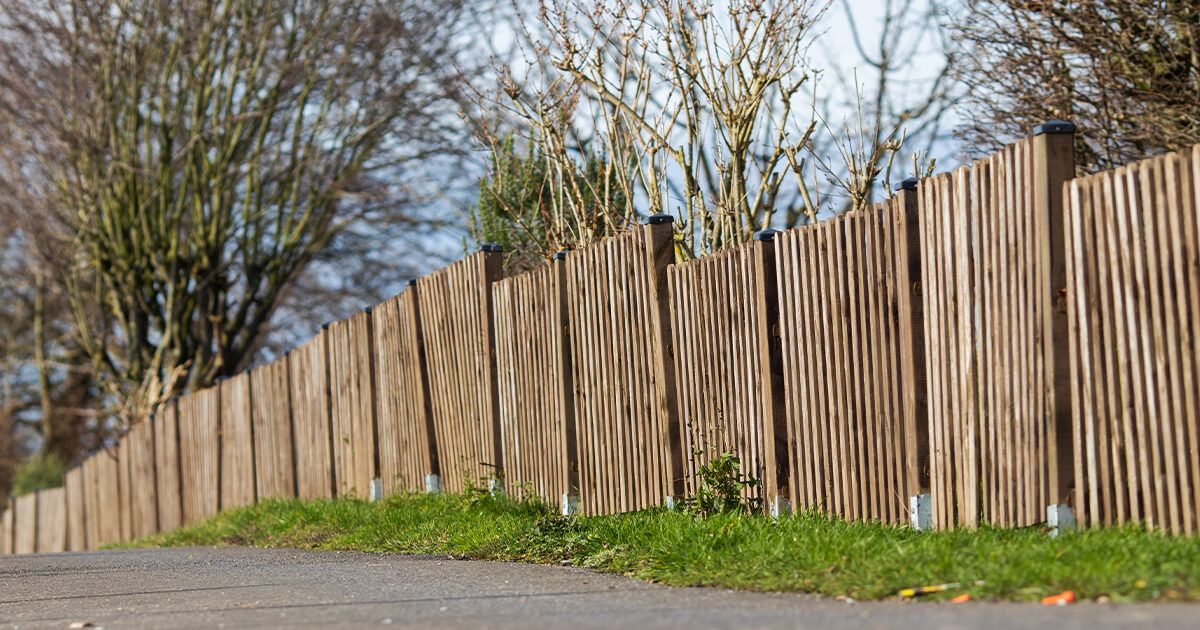
Or maybe you're an avid gardener, meticulously tending to your backyard oasis, only to be disheartened by a rotting fence that's slowly but surely sabotaging the beauty you've worked so hard to create. These are the types of real-life scenarios that homeowners like you often encounter.
A well-maintained fence is not just a simple boundary marker — it's a multifaceted guardian of your property. It serves as a protector, enhancing your security and privacy. It contributes to your property's curb appeal, potentially boosting its value. It even plays a role in the overall look of your outdoor space.
But here's the reality: fences, like any other part of your home, require attention and care. They face wear and tear from the elements, pests, and the passage of time. Neglecting their maintenance can lead to a range of issues, from sagging and rotting to broken posts and loose panels. That's where this blog post comes in.
In the following sections, we'll guide you through the world of fence troubleshooting. We'll look at the most common problems homeowners face and equip you with the knowledge and solutions you need to tackle them effectively. From simple DIY repairs to knowing when it's time to call in a professional, this post will be your go-to resource for keeping your fence in excellent condition.
At Resolut Construction, we specialize in all things fencing. Recognized in the Waterloo Region and beyond for quality and timeless workmanship, we have been building premium residential and commercial deck and fence projects for the past 30 years. If you’re planning to install a new fence in the near future or would like your existing one looked at, don’t hesitate to reach out. We will gladly come to assist with your project!
Let’s begin!
Common Fence Problems
Fences, like any outdoor structure, are susceptible to a range of problems over time.
It's essential to cover a variety of these issues that homeowners commonly encounter, such as:
Sagging: Fences can start to sag due to various factors like soil erosion, deteriorating posts, or the weight of heavy vegetation.
Rotting: Wood fences are especially prone to rotting, which occurs when the wood is exposed to excessive moisture and lacks proper sealing or treatment.
Broken Posts: Broken or damaged fence posts can compromise the entire structure's stability, often resulting from heavy impacts or natural decay.
Loose Panels: Panels may become loose over time, affecting the fence's appearance, privacy, and security.
DIY Fence Repairs
When it comes to addressing common fence problems, many homeowners find satisfaction in rolling up their sleeves and taking a DIY approach. In this section, we'll guide you through the steps of tackling common fence issues on your own. Before diving in, it's essential to assess your skills, the available time, and the severity of the problem. Some repairs might be simple and well-suited for DIY, while others may require professional assistance.
Sagging Fence
Begin by assessing the cause of the sagging. It could be due to loose brackets, weakened posts, or soil erosion.
Follow these steps:
Remove any vegetation or debris near the base of the fence.
Check for loose brackets and reattach them securely.
Reinforce weak posts with additional support or replace damaged ones.
Level the fence by adjusting post heights and securing them with concrete if necessary.
Rotting Wood
If your wooden fence is showing signs of rot, address it promptly to prevent further damage:
Cut out the rotted sections of wood.
Treat the remaining wood with a wood preservative or sealant.
Replace the damaged sections with new wood.
Sand and repaint or restain the entire fence for a uniform finish.
Broken Posts
A broken fence post can compromise the entire structure. Here's how to replace one:
Dig around the broken post to expose it.
Remove the broken post and any remaining concrete.
Install a new post, ensuring it's level and securely anchored in concrete.
Reattach fence panels or rails to the new post.
Loose Panels
Loose fence panels can be a hassle, but you can restore stability with these steps:
Tighten loose fasteners, such as screws or nails, that secure the panels to the posts.
Replace any damaged or rotted panels.
Check the alignment of the panels and adjust them for a uniform appearance.
Fence Maintenance Tips
Regular maintenance is key to ensuring your fence stands strong for years to come. Consider the following preventive measures:

Clearing Debris: Keep the area around your fence clear of leaves, branches, and other debris. This prevents moisture from accumulating, which can lead to rot and decay.
Trimming Overhanging Branches: If you have trees near your fence, regularly trim branches that could fall and damage it during storms or windy conditions.
Protective Treatments: Apply water repellents, sealants, or stains to protect your fence from moisture and UV damage. These treatments enhance durability and add to its visual appeal.
Drainage Systems: Installing proper drainage systems near fence posts can prevent soil erosion and maintain the stability of your fence.
Maintaining your fence involves various activities to keep it in top condition:
Cleaning: Regularly clean your fence to remove dirt, mold, and mildew. Depending on the material, use appropriate cleaning solutions and methods.
Painting: If your fence is painted, know when it's time for a fresh coat. Proper painting not only revitalizes its appearance but also provides protection against the elements.
Staining: For wooden fences, staining can be an excellent choice. It enhances the natural beauty of the wood and adds an extra layer of protection against weathering.
Regular Inspections: Don't underestimate the power of routine inspections. Regularly examine your fence for signs of wear and tear, including loose fasteners, rot, pest damage, or leaning posts. Catching issues early can save you time and money.
Fence Replacement vs. Repair
One of the critical decisions homeowners face when dealing with fence problems is whether to opt for repairs or go for a complete replacement. Every fence issue is unique, and the decision to repair or replace should be based on various factors, including the extent of damage, the fence's age, material, budget constraints, and personal preferences. If you’re unsure, give us a call and we’ll help you sort it out.
Fence Repair Costs
When it comes to addressing fence issues, understanding the associated costs is crucial for homeowners. Repair costs are not set in stone; they can vary significantly depending on various factors. We will delve into these nuances, considering elements like the type of fence material (wood, vinyl, metal, etc.), the extent of the damage, and geographic location. For an exact quote for the cost of repairing or replacing your fence, give us a call.
When to Call a Professional
Sometimes DIY repairs may fall short.
There are potential pitfalls of attempting complex fence fixes without professional expertise. There are also limitations of self-repair in situations that demand specialized skills. In a situation like this, it’s best to enlist the services of a qualified fence contractor for optimal safety and long-term effectiveness.
At Resolut Construction, we specialize in all things fencing. Recognized in the Waterloo Region and beyond for quality and timeless workmanship, we have been building premium residential and commercial deck and fence projects for the past 30 years. If you’re planning to install a new fence in the near future or would like your existing one looked at, don’t hesitate to reach out. We will gladly come to assist with your project!
Contributors
Latest Posts
Show All Recent Posts
Archive
-
2024
-
July
-
June
-
May
-
April
-
March
-
February
-
January
-
-
2023
-
December
-
November
-
October
-
September
-
August
-
July
-
June
-
May
-
April
- Kitchener Waterloo Residential Fence: Buying Guide
- Incorporating Fencing into your Landscaping Design
- Choose a Chain Link Fence Installer You Can Trust
- Prepare Your Backyard for Summer: Outdoor Organization Ideas
- 7 Essential Tips For Your Kitchener Waterloo Fencing Project
- A Comprehensive Guide For Making Your Fence Pet-Friendly
-
March
-


